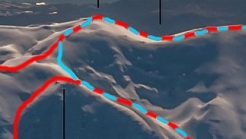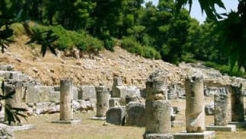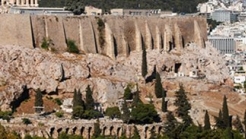

Greece
The Amfiareio was the biggest ancient Greek sanctuary of the vile god and hero of Argos Amfiaraos. During its’ operation, it was the national sanctuary of Oropos, one of the oldest cities in Ancient Greece.
The Oropos Amfiareo lays in a small valley southwest of Oropos. The Amfiareio was the biggest ancient Greek sanctuary of the vile god and hero of Argos Amfiaraos. During its’ operation, it was the national sanctuary of Oropos, one of the oldest cities in Ancient Greece. It was founded in the end of the 5th century BC, when Oropos was under Athenian rule.
As a port, Oropos was being claimed by the Boeotians and the Athenians. Around 506 BC, following the victorious excursion of Athenians against the Boeotians or a little after the Persian wars, Oropos came under Athenian rule. A speech of the ancient orator Lysias, testifies that Polystratos the Athenian was the commander of Oropos from 411 BC.
The time from 338 BC to the beginning of the 3rd century BC, is a time of various changes. Philip the Macedonian or his son Alexander, give Oropos to the Athenians. The Athenians restructure the festivities and the games of the temple, give offerings to Amfiaraos and construct buildings. In 313 BC, Oropos is conquered by Ptolemeus, general of Antigonos the One-Eyed. In 287 BC, Oropos becomes a member of the Common of Boeotia, and what follows is a flourishment of the Amfiaraeon that lasts until 146 BC. Its temple is now a meeting point of scores of people from aroung the Greek world, the islands and Asia Minor. The temple receives many offerings and sponsorships. The ports –Skala and Delfino as are their names today- where the visitors disembarked contribute to the increase of Oropos’ income. Great monarchs from the East, such as Ptolemaeus IV contribute to the small state.
During the Roman times, (from 146 BC) Oropos is self sustained. The blooming of the temple during the 1st century BC is due to τηε Ρομαν γενεραλ Συλλας, a major benefactor. In the beginning of the 1st century BC, during the times of Augustus, Oropos is finally a domain of Athens. Writings of the first christian times found in the Amfiaraeon, inform us on the Athenian offerings to the temple’s worshipped god. Followin the domination of Christianity, the temples pilgrimage died away.
In 1884 the systematic dig of the temple started, under the Archeological Company’s guide, with Vasileios Leonardos. The dig lasted until 1929 with some breaks between, and unearthed the remains of buildings in Mavrodilesi and many writings, valuable considering the information they contain.
The Amfiaraeon is built on the edge of a stream, Charadra as it was named by the Ancients. On the left bank are situated the formal buildings, the temple, the arcade, the altar, the theater, and on the right bank is the living quarters. On the living quarters, apart from offices, shops and hotels, were the market and Klepsydra (a hydraulic clock). Nowadays, the remains of the temple’s buildings can be seen.


Pierra Creta southernmost ski mountaineering event. Pierra Creta is a ski mountaineering race held in the mountains of Crete. It was organized for first time in March 2014, and in 2015 as a team race with great success. After two successful consecutive editions, “Pierra Creta” is a bi-annual event!


The Amfiareio was the biggest ancient Greek sanctuary of the vile god and hero of Argos Amfiaraos. During its’ operation, it was the national sanctuary of Oropos, one of the oldest cities in Ancient Greece.


The Acropolis hill was the site for the most important and glamorous temple of the ancient city, dedicated to Athena, the protector godess of the city. This sacred site is connected to the most important myths of ancient Athens, the great religious ceremonies.
1039 Ε 6061 01515 00